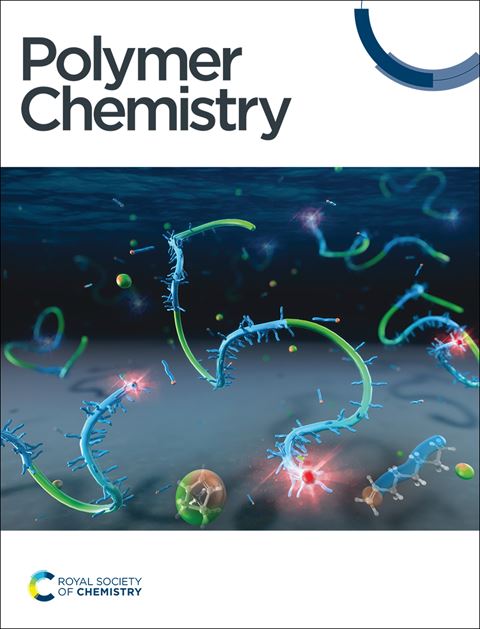Effective photoinitiating systems using citric acid-derived chromophores as photosensitizers for 3D bio-printing applications
IF 4.1
2区 化学
Q2 POLYMER SCIENCE
引用次数: 0
Abstract
The growing interest in the use of naturally derived compounds, associated with the increasing focus on green chemistry principles in various fields of chemical technology, is also evident in the development of light-cured resins for 3D printing. Therefore, in this work, four fluorophores formed alongside carbon dots as one of the products of the reaction between citric acid and specific β-amines were comprehensively studied. These studies facilitated the detailed optical characterization of the compounds, which in turn led to a better understanding of the electron transfer mechanisms accompanying the initiation of photopolymerization processes. In addition, cyclic voltammetry and photostability studies enabled a preliminary assessment of the applicability of the fluorophores as photosensitizers of commercially available diphenyl iodonium salts (SpeedCure 938®). FT-IR analyses and supporting photorheology measurements made it possible to determine the kinetics of the photopolymerization process and demonstrate the influence of the water content (non-reactive agent) on its course. Finally, it was possible to develop resins for 3D printing with low viscosity for use in the stereolithography (SLA) method and high viscosity for use in the direct ink writing (DIW) method enriched with light-curing of the finished pattern.

有效的光引发系统使用柠檬酸衍生的发色团作为3D生物打印应用的光敏剂
人们对天然衍生化合物的使用越来越感兴趣,在化学技术的各个领域越来越关注绿色化学原理,这在3D打印光固化树脂的开发中也很明显。因此,本研究对柠檬酸与特定β-胺反应产物之一碳点旁形成的四个荧光团进行了全面的研究。这些研究有助于对化合物进行详细的光学表征,从而更好地理解伴随光聚合过程开始的电子转移机制。此外,循环伏安法和光稳定性研究能够初步评估荧光团作为市售二苯碘盐(SpeedCure 938®)光敏剂的适用性。FT-IR分析和辅助光流变学测量可以确定光聚合过程的动力学,并证明水含量(非活性剂)对其过程的影响。最后,有可能开发出用于3D打印的树脂,其低粘度用于立体光刻(SLA)方法,高粘度用于直接墨水书写(DIW)方法,从而丰富了成品图案的光固化。
本文章由计算机程序翻译,如有差异,请以英文原文为准。
求助全文
约1分钟内获得全文
求助全文
来源期刊

Polymer Chemistry
POLYMER SCIENCE-
CiteScore
8.60
自引率
8.70%
发文量
535
审稿时长
1.7 months
期刊介绍:
Polymer Chemistry welcomes submissions in all areas of polymer science that have a strong focus on macromolecular chemistry. Manuscripts may cover a broad range of fields, yet no direct application focus is required.
 求助内容:
求助内容: 应助结果提醒方式:
应助结果提醒方式:


